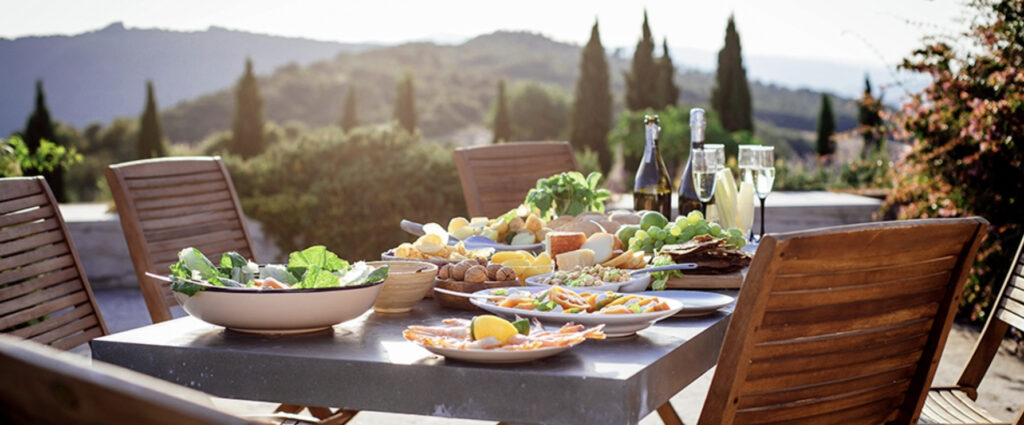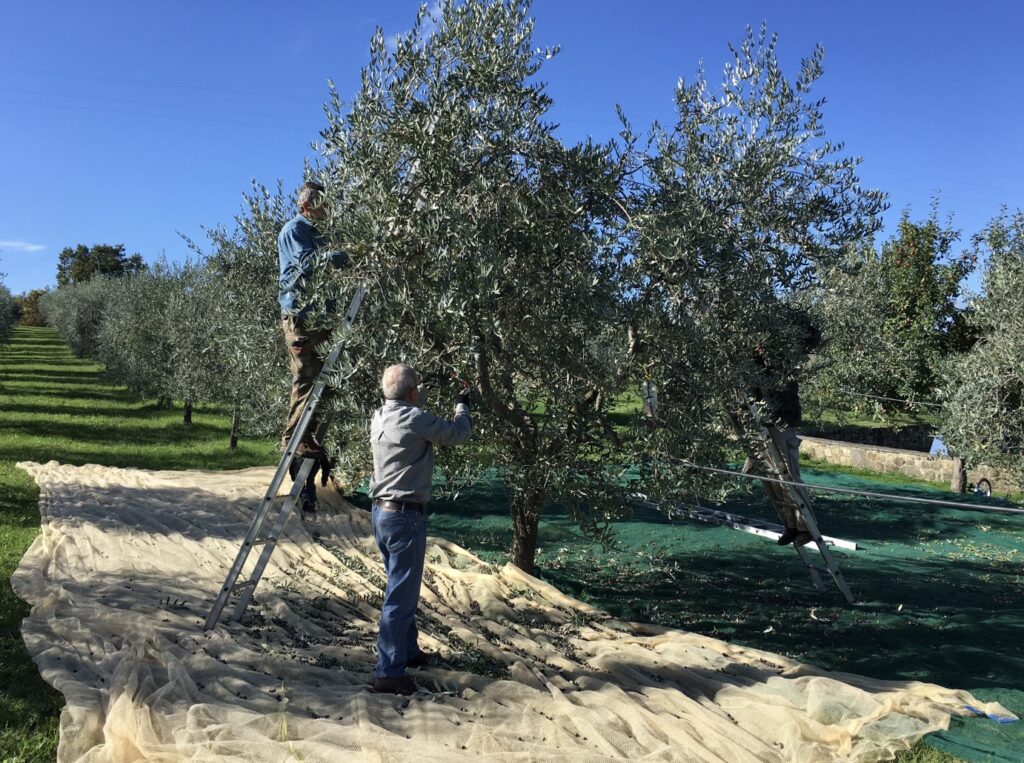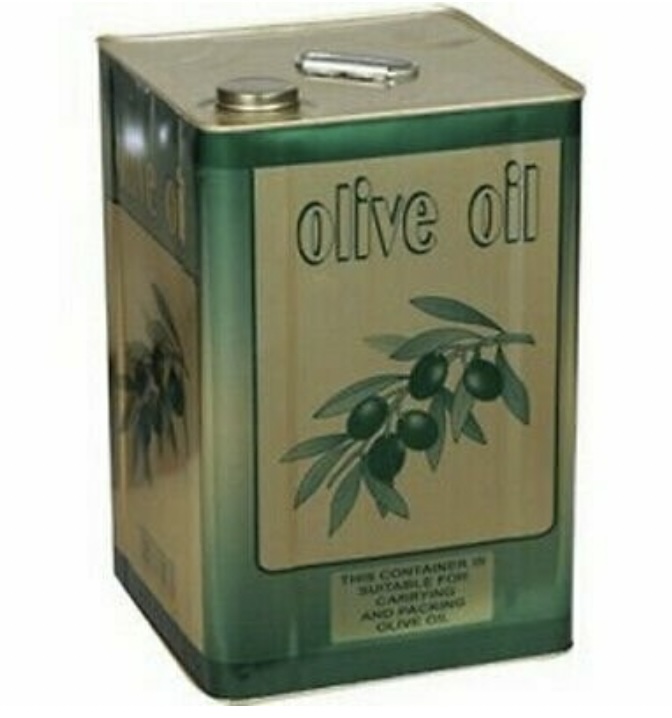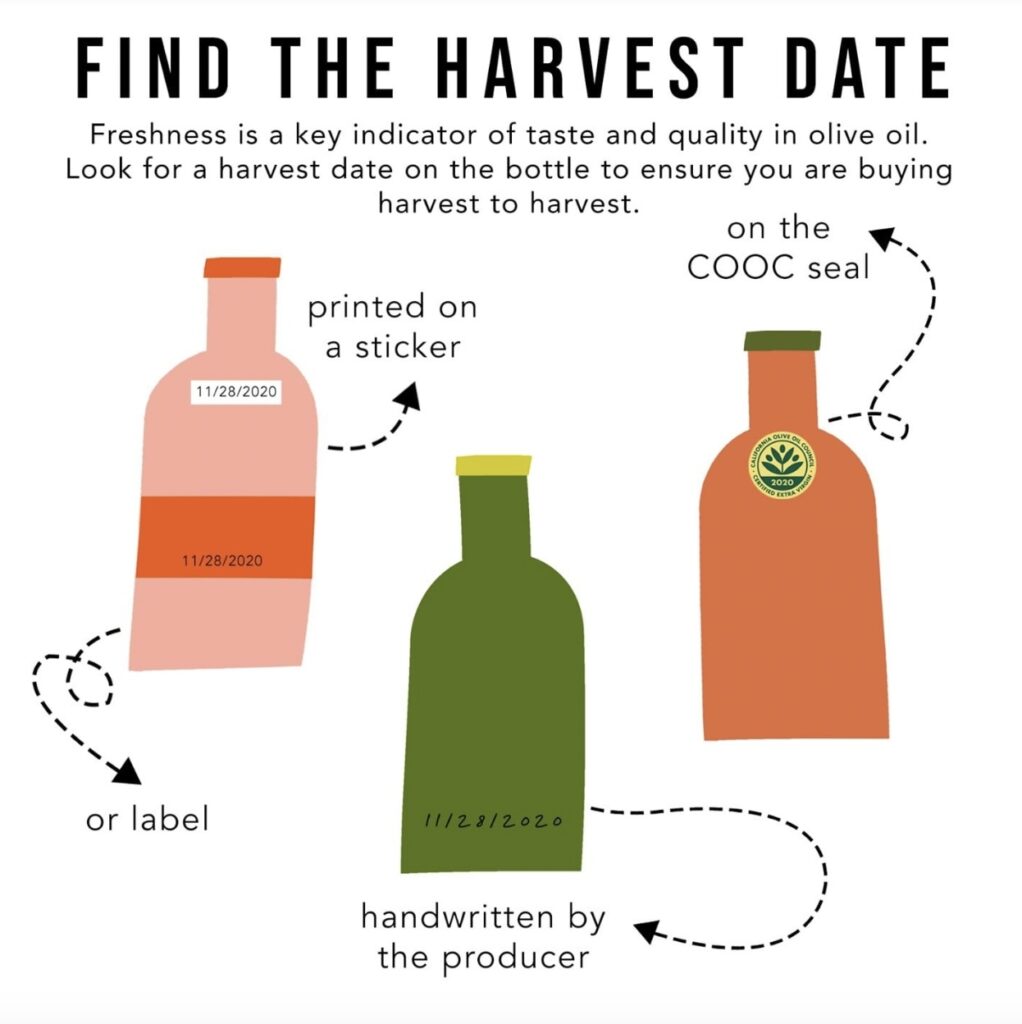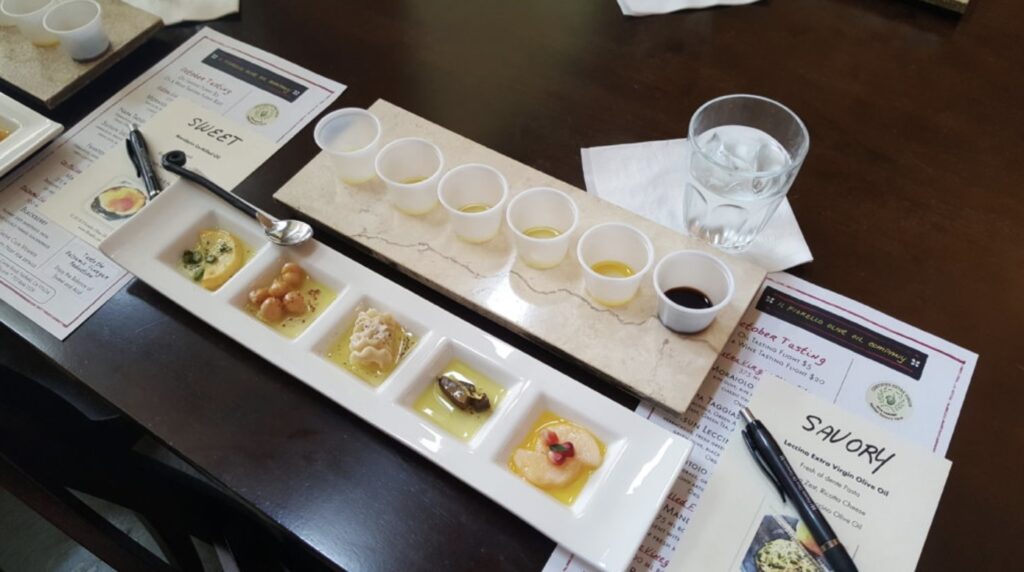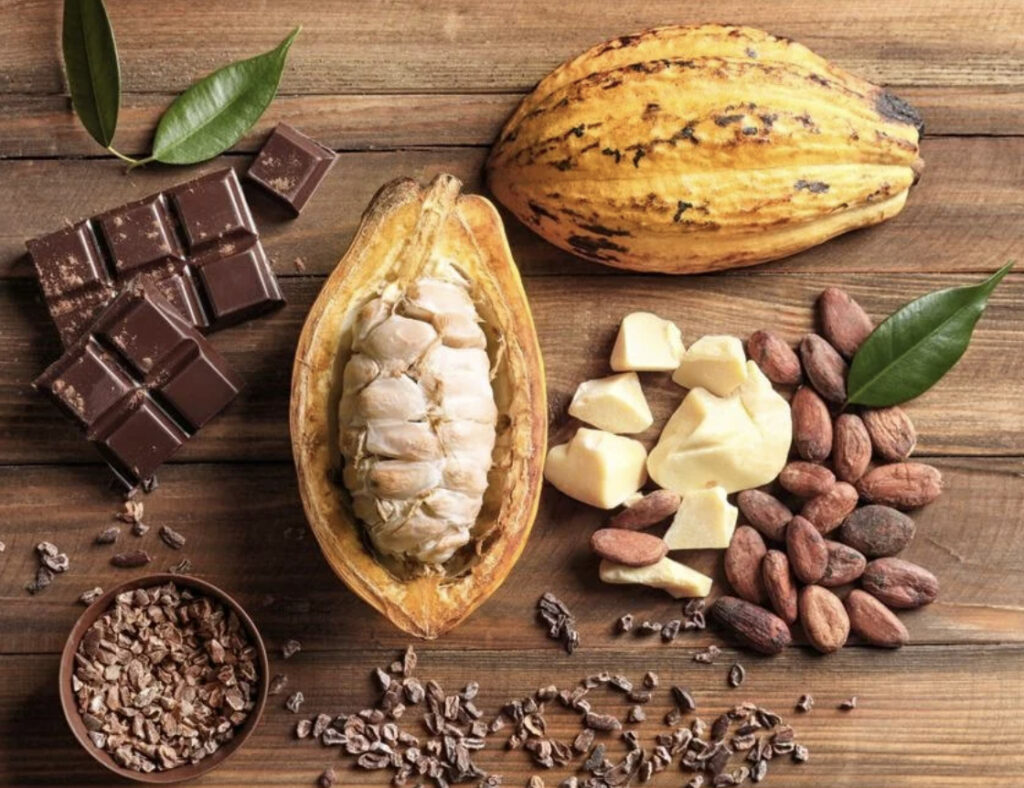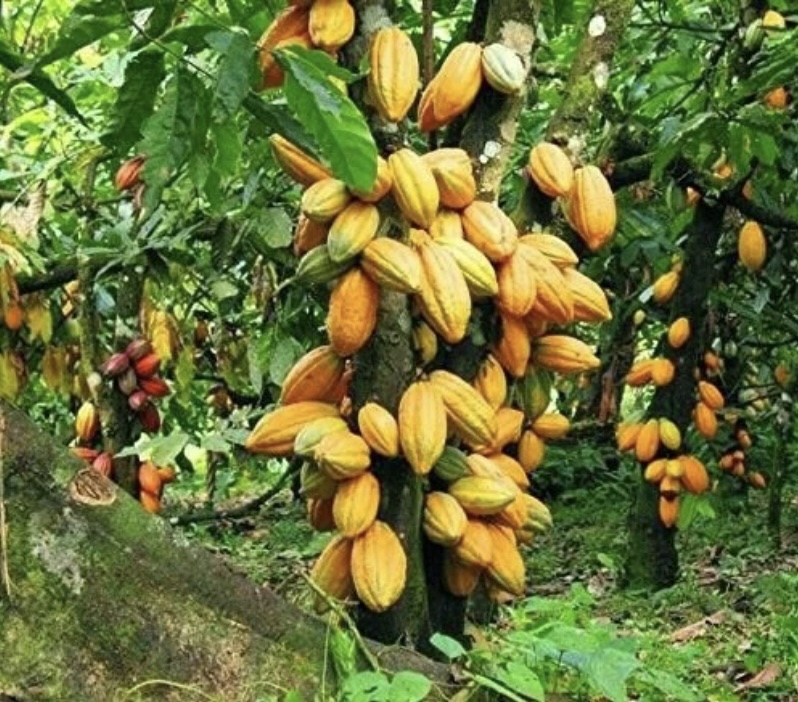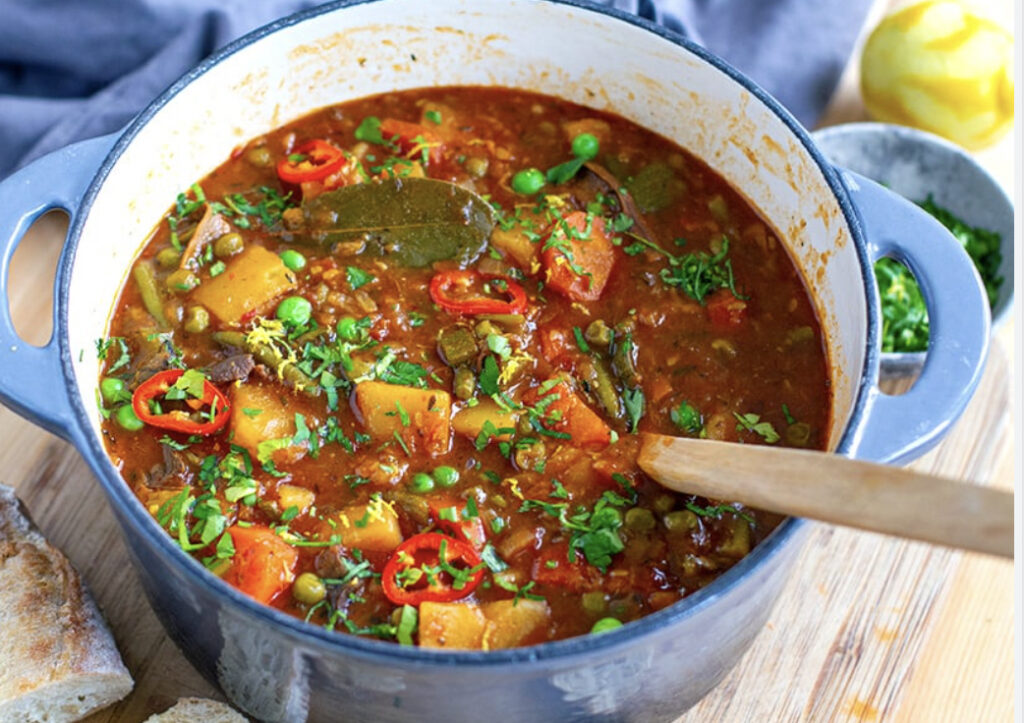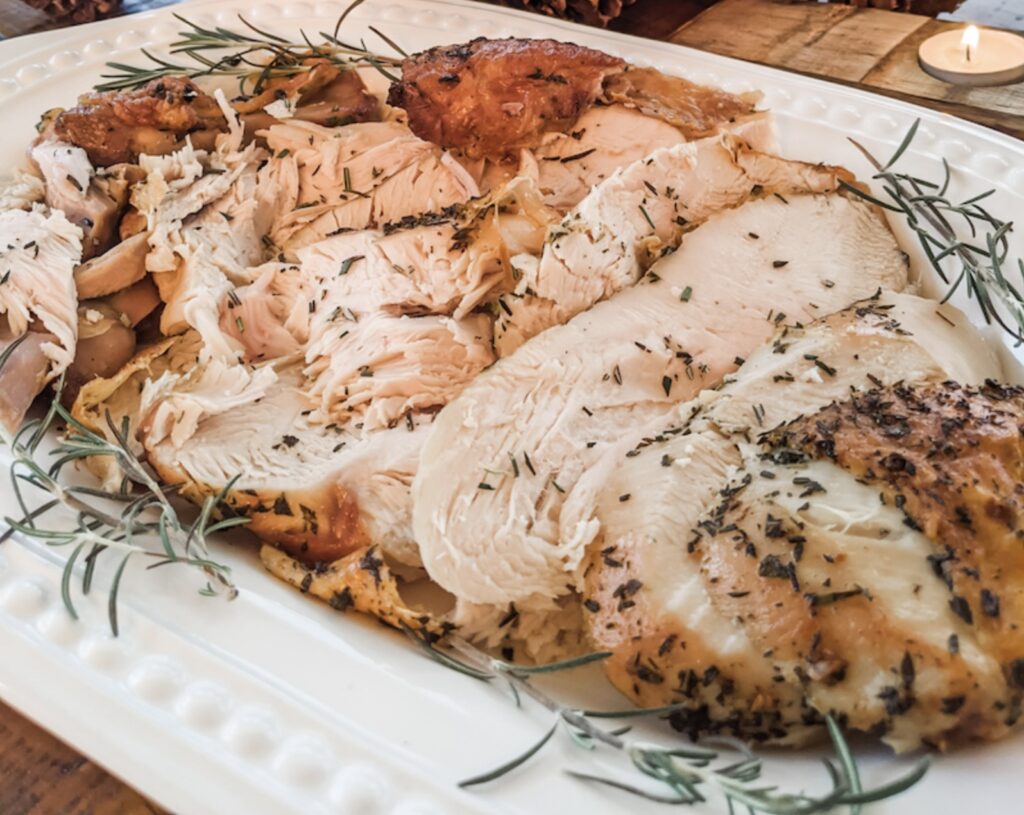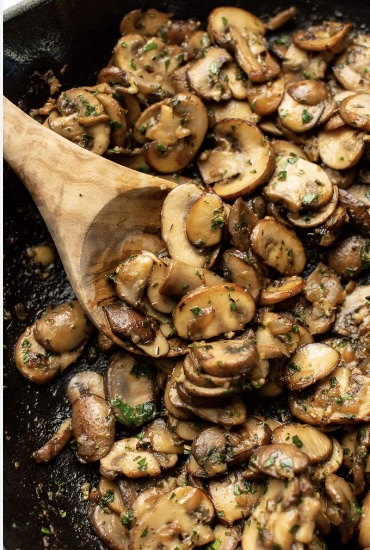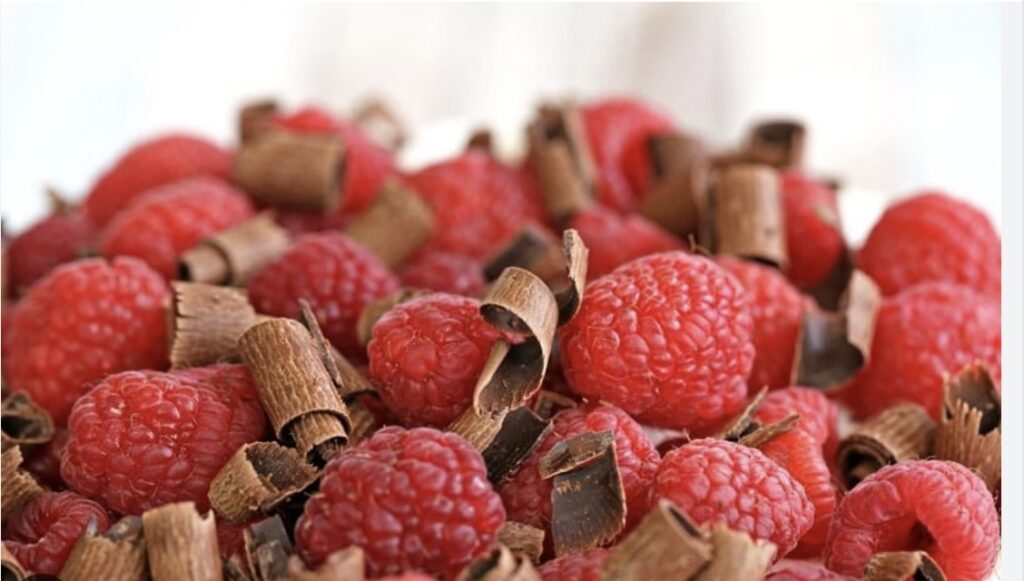Most Olive Oil is Not As Healthful As You Think
- At May 17, 2025
- By Katherine
- In Aging-In-Place, Articles, News
 0
0
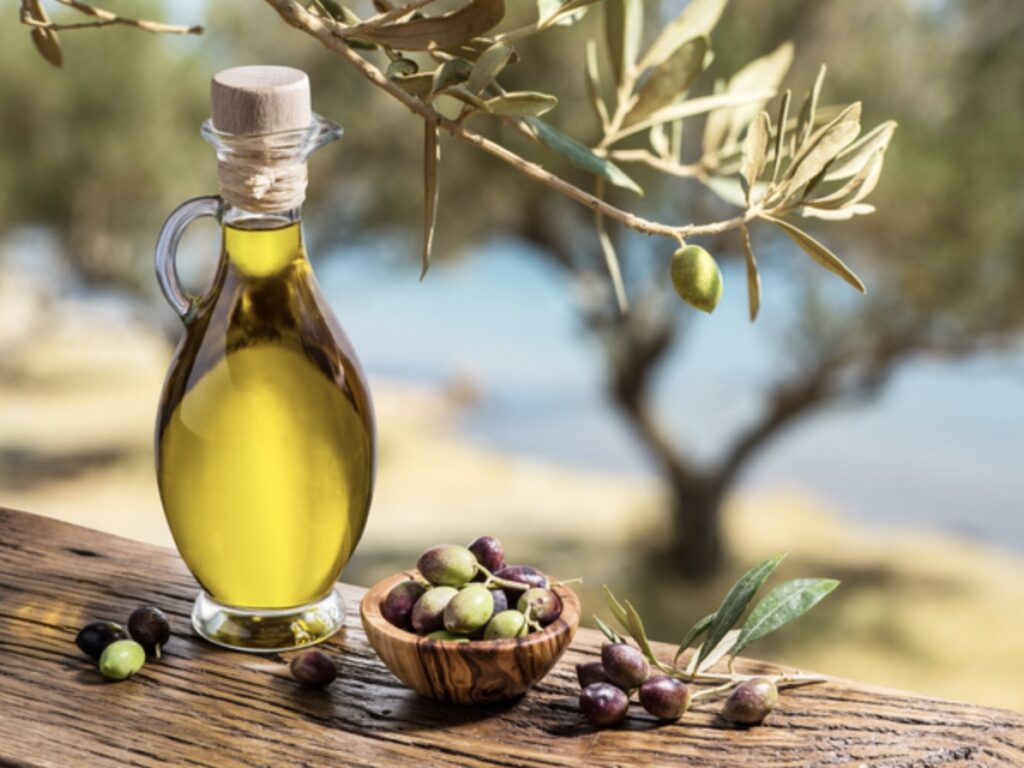
Does that mean you won’t receive the expected health benefits when using olive oil bought on America’s grocery shelves? Probably not!
This issue first came to my attention at a Mediterranean Diet Conference I attended in Florence, Italy, co-sponsored by New York University’s Department of Dietetics and the James Beard Foundation.
The following story was originally published in The Washington Post… Read the article in Livescience.com
Olive Oil Gets Worse with Age
You feel good about using olive oil, right? You know it’s good for you, tasty and easy to use. Still, to get the most benefits — and the best bang for your buck – there’s more you should know.
“The health benefits of olive oil are 99 percent related to the presence of the phenolic compounds, not the oil itself,” says Nasir Malik, research plant physiologist at the U.S. Agriculture Department’s Agricultural Research Service.
Malik is referring to the polyphenols in olive oil, nutrients also found in wine, tea, cocoa and many fruits and vegetables that have been discovered over the past decade to be the substances responsible for the bulk of olive oil’s health benefits, without which “you might as well use canola oil,” Malik says.
And when tested, polyphenols were surprisingly low in most commercially available olive oils, according to a recently published study conducted by the Agricultural Research Service, co-authored by Malik.
They also don’t live up to international or U.S. Agriculture Department quality standards, according to studies conducted by the University of California at Davis Olive Center.
The good stuff
Polyphenols decrease heart disease risk factors by lowering blood pressure and cholesterol, reducing blood clotting and improving the health of artery linings.
Researchers have discovered that there are “healthy genes” that, when activated, reduce your chances for metabolic syndrome, the name for a group of risk factors (high blood pressure, cholesterol, and glucose) that together increase the risk for heart disease, America’s No. 1 killer. Fresh, high-polyphenol olive oil affects these genes in a positive way, reducing your risk for metabolic syndrome and heart disease, according to the 2025 study in Clinical Practice. But low-polyphenol olive oil does not have the same effects.
Polyphenols also reduce cancer risk by lowering inflammation and cellular proliferation. This “review of 45 individual studies reveals that, overall, highest versus lowest olive oil consumption was associated with 31% lower cancer risk. Significant protection was noted for breast, overall gastrointestinal, upper aerodigestive and urinary tract cancer,” according to a 2022 study in PLoS One. They act as antioxidants, reducing oxidation and cell damage, which leads to many degenerative diseases.
Olive oil polyphenols even reduce microbial activity and infections. “Experimental studies have confirmed significant anti-inflammatory and immunomodulatory effects of dietary virgin olive oils and its bioactive components supplementation in preclinical models of autoimmune diseases, such as inflammatory bowel disease, rheumatoid arthritis, systemic lupus erythematosus and sclerosis,” according to this 2019 study in Nutrients.
These biological benefits explain, in part, why the Mediterranean diet, high in olive oil, has been linked with superior health. But there is an advantage even the poorest of the poor in Mediterranean countries have enjoyed since at least 4,000 B.C.: freshly harvested olive oil. That’s because olives were growing on trees in their own back yards; it was plentiful and cheap. But its freshness had been taken for granted.
Waning quality
Studies show that as days, weeks and months go by after harvest, the polyphenol content and health benefits of the oil diminish.
“Think of olive oil as olive juice with a maximum two-year shelf life,” says Selina Wang, research director at the U.C.-Davis Olive Center.
Several factors are responsible for the polyphenol content of olive oil, according to the experts:
●Harvesting method: Rougher treatment and exposure to the elements reduces polyphenols.
●The age of the trees: Older trees contain significantly more.
●Olive maturation: Green olives contain more polyphenols than ripe olives, though it’s easier to extract more oil from riper olives.
●Processing: The less processing the better. “Extra virgin” olive oil, which is cold-pressed only once, has the highest polyphenol levels. Two presses (“virgin” olive oil), reduces polyphenol content further, and oil with three extractions contains only about half the value of “virgin” olive oil. Highly refined or “light” olive oils, which use heat or chemicals in the refining process, have significantly lower polyphenol levels.
●Storage: Any exposure of the harvested olives or the oil to heat, light or air will reduce polyphenol content. (If you’re using extreme heat in cooking, you’ll most likely lose the polyphenols anyway, so you might as well use canola oil, which contains more heart-healthy omega-3 fatty acids.)
The Quest
Marcia Horting and her husband, Marc Marzullo, who visit Italy regularly, are on a constant quest for great olive oil. “We look for oils produced by single vineyards, co-ops in small towns like Volpaia, or high-quality Tuscan producers that are grassy and spicy,” says Horting, a consultant in Gaithersburg. She has noticed that in the bigger stores in Paris and Rome serving tourists, “older olive oils are sold at the same prices as the more recent harvest.”
Luckily, you no longer have to travel to Italy for high-quality extra virgin olive oil, as they are now being produced in the United States. They’re may be fresher — and with a price you can afford. California is the leader of the olive oil-producing states, but Texas, Oregon, Arizona and Georgia are producing a small amount.
It’s tricky knowing the olive oil you’re buying is high-quality, fresh extra virgin olive oil. In most U.S. stores, I have found olive oil with harvest dates on perhaps one out of 20 bottles. Some have “sell-by” dates, which are usually two years after harvest (already too old!), though there are no standards for a sell-by date, so there is no guarantee how old your olive oil is unless there is a harvest date. Olives are harvested once annually, usually in the fall/winter, depending on the region. Look for a harvest date within the past year.
Even if it has a harvest date, you still won’t know whether it has been harvested and handled to maximize polyphenol content.
The way I handle this is by going to a specialty shop where the owners are familiar with the olive farm from which the olives were harvested and the oil processed, or somewhere that I know sells California or Texas olive oil. I make sure the container is opaque. It has to have a harvest date within the past year. I keep it in a cool, dark cabinet at home, and use it up quickly. I save expensive olive oil for drizzling on salads and use canola oil for cooking, especially with high heat.
The more consumers demand harvest dates and proper handling, the more these products will become available.
What to look for
Advice from Dan Flynn, executive director of the UC-Davis Olive Center:
●Look for a harvest date on the label (it should be no more than one year old). Freshness is important for quality and nutrition. Some retailers are becoming more savvy about this.
●Color is not an indicator of freshness. Some people think a strong green tint means better quality, but some olive varieties are just greener than others. Some high-quality olive oils are a golden color.
●Buy olive oil in a container that protects the oil from light. That could be dark glass or a tin.
●People need to taste truly fresh oil. I believe most people are used to an oil that is not fresh, and that’s what they think it should taste like. There’s a high-quality product available at the same price. Extra virgin olive oil has a special flavor and freshness. Once people taste fresh extra virgin olive oil, they’ll want to continue choosing it.
●Olive oil should smell fruity and taste and smell like olives. Some describe high-quality olive oil as “grassy” or “peppery.”
For maximum nutrition, quality and flavor, ideally, the olive oil you buy should not be more than one year old. It should say “extra virgin.” It should be harvested carefully, processed quickly and minimally, stored in a cool dark environment, opened and used quickly without too much exposure to air.
This piece was originally published in The Washington Post.
Buy Your Chocolate While You Can Afford It! (I did): 38% and 21% Tariffs on the Highest Cocoa Producing Countries.
- At May 12, 2025
- By Katherine
- In Aging-In-Place, Articles, News
 0
0
I just bought several pounds of my favorite Belgian Dark Chocolate in light of this recent news. The highest cocoa producing countries, Ghana and The Ivory Coast, are slated to be charged 38% and 21% tariffs, respectively, for their exports by the Trump administration. Depending on the country, new tariffs are anywhere between 10%, the baseline tariff for all countries, and 38%, according to Americas Quarterly. (Though worldwide, 50% is the highest so far – or 145%, depending on the day!)
“There are over 2 million small cocoa farms in [the West] African region thanks to its favorable climate and fertile soils that make the land ideal for cocoa cultivation. These and other regions 20 degrees north and south of the equator also offer the essential climatic conditions—hot and humid—for growing cocoa,” according to the Cocoa Confectionary Company.
Chocolate is Important!
I recommend dark chocolate as the rare healthy treat that has virtually no downsides. And just about everyone loves it. It’s an excellent choice for people with diabetes because chocolate has a low glycemic index, with dark chocolate being about 22 and milk chocolate at about 50. Just keep the amount to no more than about an ounce, which costs about 150 to 170 calories. A luxurious dessert for my guests is topping a bowl of fresh raspberries with dark chocolate shavings. I like to chop dark chocolate into my evening yogurt.
Cocoa and dark chocolate have been associated with a reduction in all causes of death. In fact, “chocolate contains several health-promoting factors (bioactive components – polyphenols, flavonoids, procyanidins, theobromines, etc, and vitamins and minerals) that positively modulate the immune system of human beings. It confers safeguards against cardiovascular diseases, certain types of cancers, and other brain-related disorders like Alzheimer’s disease, Parkinson’s disease, etc. Dark chocolate is considered a functional food due to its anti-diabetic, anti-inflammatory, and anti-microbial properties. It also has a well-established role in weight management and the alteration of a lipid profile to a healthy direction,” according to a 2022 study in Current Research in Food Science.
For more on chocolate’s health benefits, check out my Washington Post article.
NOTE: I keep my chocolate in the refrigerator to keep it fresh
Springtime Strawberry, Baby Spinach & Goat Cheese Salad with a Balsamic Vinaigrette
- At May 12, 2025
- By Katherine
- In Aging-In-Place, Articles, News, Recipes
 0
0
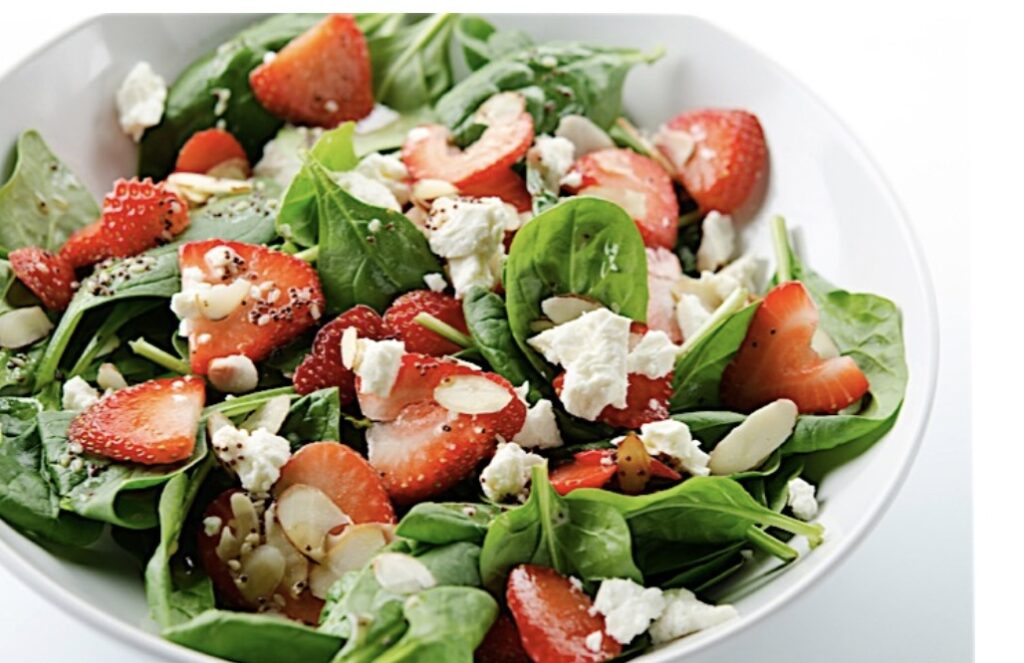
Springtime Strawberry, Baby Spinach & Goat Cheese Salad with a Balsamic Vinaigrette
This is a great salad for a hot day. Let the strawberries sit long enough to absorb the balsamic vinegar flavor while you take time to catch up with friends and enjoy the summer day.
Ingredients
For the strawberries:
1 pint of ripe strawberries, if they are large, cut them in half
1/2-3/4 cup balsamic vinegar
For the salad:
Baby spinach
Baby arugula
Goat cheese crumbles
1 small red onion, sliced
1 ounce of toasted, slivered almonds
For the dressing:
3 tbsp balsamic vinegar
1 tsp dijon mustard
1/4-1/2 cup olive oil
salt and pepper to taste
Directions
Prepare the strawberries by placing them into a bowl and add the vinegar. Let them sit for a while to absorb the flavor of the vinegar- an hour or better. This can be done at room temperature.
In a separate bowl. make the dressing by combining the vinegar, dijon mustard, salt and pepper. Slowly stream in the olive oil, tasting for flavor balance. If necessary, add additional mustard to taste.
When ready to serve, combine equal parts of baby spinach and arugula. Add in the sliced red onion, and lightly toss the salad with a small amount of dressing, adding more as necessary slowly dressing the salad as to not drench it all at once. Add the goat cheese crumbles and almonds. Lastly, plate the salad onto a chilled serving plate. Using a slotted spoon, remove the strawberries from the vinegar and place them on top of the greens. Finally, top with fresh ground pepper and serve.
Battling the Blizzard Bloat Blues!
- At January 15, 2025
- By Katherine
- In Aging-In-Place, Articles, News, Recipes
 0
0

These days you may have noticed a subtle expanding of yours and your friends’ waistlines. Take consolation in knowing you are not the only ones suffering from… “BLIZZARD BLOAT,” that creeping up of body fat that has hit many of us recently, according to an informal survey of frustrated, and slightly fatter colleagues and friends.
In the animal kingdom, fattening up for the cold winter months is critical for survival. For human animals, that leftover caveman-instinct to gorge on fattening foods, and hibernate, just causes trouble
Though these old instincts are plausible as a partial cause of winter weight gain, there are more complex—and controllable—causes too. The most important involve decreases in sunlight, physical activity, increases in cravings, and comfort eating. It’s the perfect storm of factors that create the calorie imbalance leading to blizzard bloat.
The Perfect Storm
- Physical Inactivity. When it’s cold outside, we tend to exercise less and even cut back on subtle calorie-burning activities such as short walks, light outdoor chores. This lack of calorie burning may only add up to about 100 fewer calories per day, but a deficit of 100 calories every day, translates to a 3-4 pound weight gain during the winter months, and 10 lbs in a year,
- Perpetual Darkness. Most of us are affected by winter’s gray days, and sunlight deprivation. We need light so our brains have enough of the neurochemical, Serotonin. A decrease in seratonin can increase our chances of experiencing a low mood, and food cravings. A small percentage of people are particularly vulnerable. About 5 percent of the population become markedly depressed with Seasonal Affective Disorder (SAD).
- Cravings for Warm Comfort Foods. Being light deprived, and hibernating inside instead of getting outside and moving, reduces the happy chemicals in your brain, like endorphins, and serotonin. This can lead to increased cravings of fattening food. Studies show excess calories contribute more significantly than any other factor to the calorie imbalance causing blizzard bloat.
Strategies for Battling the Blizzard Bloat Blues

- Get some daily sunshine. You’ll feel refreshed and less bored if you walk outside, and your appetite may be more controllable. The amount of needed daylight varies for each individual. In general, the more the better. One hour daily in the morning, ideally at sunrise, is most helpful. If you’re not an early bird, several hours on the weekends may help make up for a lack of sun during the week. But the sun has to reach your eyes, so no sunglasses. If you don’t feel comfortable with the guidelines, or If going outside isn’t always an option, light therapy, also known as phototherapy, may help. Ask a mental health professional about the special lamps you can buy to make up for light deprivation. They work! Studies show they increase serotonin and help decrease depression in most people. Or, do what the Swedes do. Create candle lit rooms, use sconces with mirrors, keep curtains open. Pick the strategies that work for you!

- Up your activity level. Just a little means a lot. During just one exercise bout (only 10 minutes), your brain releases the feel-good neurochemicals, endorphins and serotonin. They reduce pain, increase feelings of well-being, elevate your mood, and will help reduce cravings. If you’re regularly active, these benefits multiply. A brisk 30-minute walk – just as effective as running – three times a week relieves major depression just as effectively as an antidepressant in most adults. Of course, moving even more, gives you even more significant benefits. Assuming you’re not fond of the cold, use these ideas to bundle up!
- Hold on to your favorite dishes, just rearrange them a bit. In the winter, we tend to crave more fattening, warm, comfort foods, and fewer healthy cold foods, like salads. But your comfort foods don’t have to be fattening. My advice, which has been successful for me and my clients, is to continue eating your favorite foods, just change their balance slightly. It’s been well established that you can increase the volume and satisfaction of your meals and dishes – that is, you can eat more food for fewer calories – by simply incorporating veggies or fruits so they comprise at least 50% of the volume on your plate (eat them first to slow you down) or in your dish,
- Veggies and fruits are predominantly water. But because the water is incorporated into the food, as opposed to just a glass of water, the meal will empty from the stomach more slowly. The slower a food empties from the stomach, the more satisfied we are with it. With that in mind, all you have to do is incorporate water or broth into your main course to create a soup or stew, add veggies to a favorite stew or casserole, so that vegetables comprise half or more of the volume. Try having a simple veggie soup as a first course to any meal. Try this technique that makes veggies taste even better than French fries! These strategies – incorporating water, and adding fruits and/or veggies to your meals and dishes – allows you to enjoy your favorite foods. But it also means that you can eat more food for fewer calories. Studies show that, for each meal that you use this strategy, you save 100 calories, naturally – without even trying. That amounts to keeping off 10 lbs a year or preventing blizzard bloat. Try my sumptuous soup recipes to feel full, satisfied, but still keep calories under control.
The BEST Thanksgiving Leftover Recipe: The Second Best Part of Thanksgiving!
- At November 28, 2024
- By Katherine
- In Aging-In-Place, Articles, News, Recipes
 0
0

I try to encourage my clients to focus on healthy leftovers, of course, but perfection is never possible or even a healthy objective. One Thanksgiving, I saved the French Apple Cake dessert for breakfast the next morning (It’s better for your weight and health to eat the most fattening food earlier in the day – Sometimes, it’s all about STRATEGY!). It was one of the best breakfasts of my life!
Make the most of the time you spend in the kitchen and ease some stress from your life by batch cooking. I feature batch recipes in my books, Diet Simple and Diet Simple Farm to Table Recipes. Batches are your favorite delicious, quick and easy meals made ahead of time so that you always have something in the freezer or refrigerator, ready to eat on a moment’s notice. And it actually saves time. When you get home from work in the evening, just zap the batch in the microwave and Voilà! Instant delicious, nutritious dinner.
Studies show you’re more likely to eat whatever is in your environment. If you surround yourself with yummy, healthy, wholesome foods, that’s what you’ll end up eating. It’s simple physics: We naturally take the path of least resistance. So why not make things easy on yourself? Plan to make a few batch meals, or even just one, this weekend so you and your family will have their home-made favorites at your fingertips all week long.
Let’s take advantage and start batching with America’s favorite holiday-for-leftovers!
Nothing could be simpler or more delicate than this dish. The flavors are rich and earthy. It contains all the elements of a complete meal. It’s nutritious and filling to boot. I feel honored that Michel Richard provided this recipe for Diet Simple. It fits perfectly as something you can cook, store in the refrigerator and eat for several meals and is a wonderfully delicious addition.
4 servings
Ingredients:
2 Tbsp Olive Oil
2 Small Onions, Peeled and Diced
1 Pound Thinly Sliced Mushrooms and any other Leftover Vegetables
2 Quarts Unsalted Turkey or Chicken Stock (defatted)
2 Tablespoons Light Soy Sauce
6 Tbsp Pearl Barley
4 Cloves Garlic, peeled and minced
Salt and Freshly Ground Black Pepper to taste
About 1 pound, boned, skinned and sliced Turkey into bite-size pieces or small slices
About 1-1/2 Cup (about 3 ounces) freshly grated Parmesan Cheese (Optional)
Heat the oil in a heavy medium saucepan over medium-low heat. Add the onion, cover and cook until translucent, for about ten minutes, stirring occasionally. Add the mushrooms – and/or other leftover vegetables. Increase heat to medium-high and cook uncovered until lightly browned, for about five minutes, stirring occasionally. Add the turkey stock, soy sauce, barley and garlic. Simmer gently for 45 minutes to cook barley and blend flavors. Season with salt and pepper. (This can be prepared ahead, cooled, covered and set aside at cool room temperature for up to four hours or refrigerated for several days.)
To serve, bring the soup to a light simmer, add turkey, reduce heat and simmer just until the turkey becomes warm, for about two to three minutes. Ladle into four soup plates. Pass Parmesan, if desired.
Katherine’s Light & Creamy Broccoli Soup with Carrots, Potatoes, and Thyme
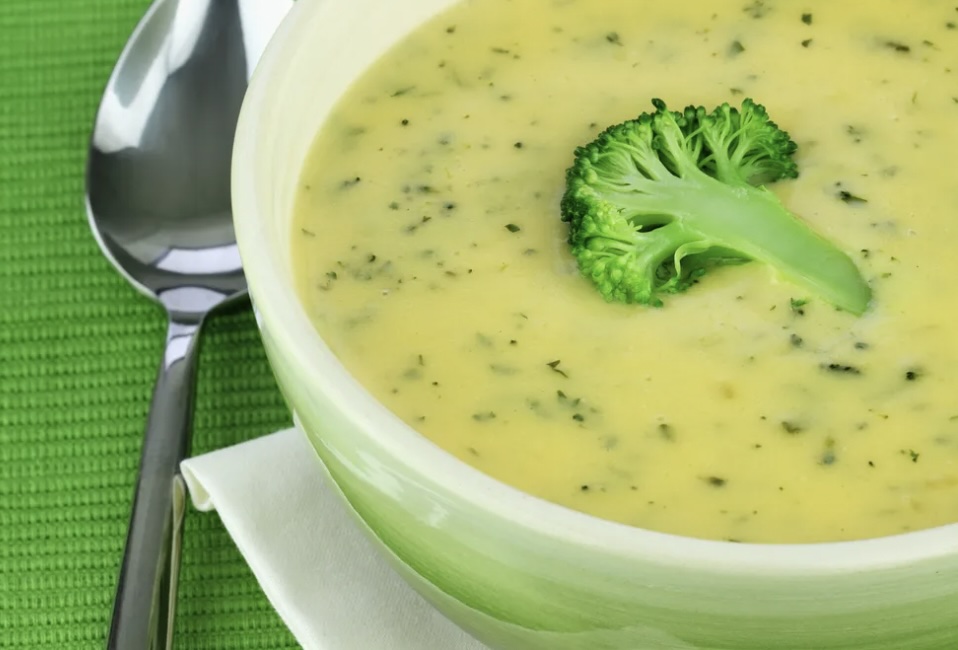
Makes 6 – 8 servings
Ingredients:
2 Tbsp Canola Oil
1 Cup Chopped Sweet Onion (about 1 medium)
1 Clove Garlic, crushed
½ tsp dried Thyme or 1-1/2 tsp fresh Thyme
2-1/2 Cups Chicken Broth
6 Cups Fresh Broccoli, Chopped (about 1 medium head)
2 Cups Non-Starchy Potatoes, Sliced (about 2 medium)
1 Cup Carrots, Sliced (about 2 medium)
2 Cups 1% Low Fat Milk
Salt (1/8 to ¼ tsp) and Freshly Ground Pepper to taste
Optional Garnish:
1 Tbsp dollop of fat free, plain yogurt, salt, and pepper, toasted whole grain bread, or croutons
Heat oil in large dutch oven (soup pot) on medium high heat. Add onion, garlic, and thyme. Sauté until golden. Add 2-1/2 cups chicken broth and the rest of the vegetables. Cover, lower the temperature, and let simmer about thirty minutes, or until vegetables are tender. Add the milk. Let the mixture cool down a bit, then puree in a blender, food processor, or better yet – with no muss or fuss, a Cuisinart Smart Stick. Puree to your desired consistency.
“Song for Autumn” by Mary Oliver
- At October 25, 2024
- By Katherine
- In Aging-In-Place, Articles, News
 0
0
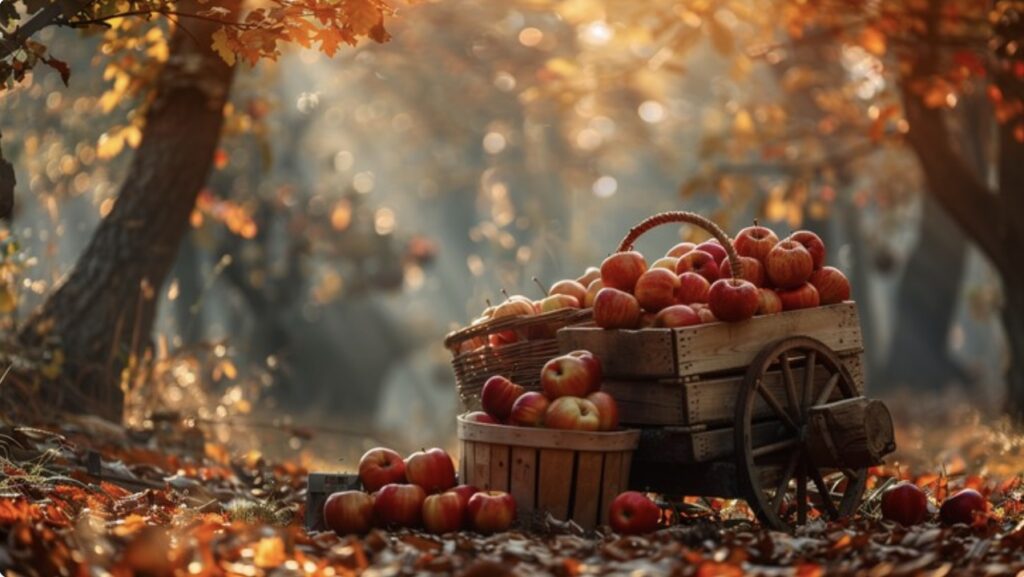
In the deep fall
don’t you imagine the leaves think how
comfortable it will be to touch
the earth instead of the
nothingness of air and the endless
freshets of wind? And don’t you think
the trees themselves, especially those with mossy,
warm caves, begin to think
of the birds that will come — six, a dozen — to sleep
inside their bodies? And don’t you hear
the goldenrod whispering goodbye,
the everlasting being crowned with the first
tuffets of snow? The pond
vanishes, and the white field over which
the fox runs so quickly brings out
its blue shadows. And the wind pumps its
bellows. And at evening especially,
the piled firewood shifts a little,
longing to be on its way.
Raspberries: A Sweet, Tart & Versatile Fruit Treat With Amazing Health Benefits

Raspberries – Another amazing food I discussed with renowned health journalist, Daryl Austin, in his USA Today column. One of the tastiest and most popular fruits, raspberries earn $432 million in sales in the U.S. – and they’re virtually everyone’s favorite fruit, Daryl said in USA Today on July 31. They are certainly my favorite!
Raspberries’ intense sweet, tart, and juicy flavor literally bursts in your mouth. Their complex flavor profile makes them versatile in either savory or sweet recipes. I throw them in salads, and add them to my yogurt, and oatmeal. For me, the most delicious way to eat raspberries is right off the bush, or locally from my Farmers Market. When they’re not in season, I buy them frozen.
My favorite dessert for guests is fresh raspberries with dark chocolate shavings. It’s an elegant and delicious way of keeping your guests happier and healthier.
Raspberries, and their close relative blackberries, are two of the most nutritious fruits on the planet. Containing 91% water, one cup of raspberries is only 64 calories, with a whopping 8 grams of fiber, a rare fiber to calorie ratio – which means they fill you up with very few calories. You can eat them to your heart’s content. In fact, the more you eat, the better!
Most of the phytochemicals in raspberries contribute to their color. The riper and redder they are, the more nutrients, antioxidants, and anti-inflammatories they contain. On a raspberry bush, some berries are redder than others. It’s because those more intensely colored berries experienced more stress than the other berries on the same bush. A plant’s phytochemical level is increased by stress. For instance, when a berry is exposed to more sun, disease, and bugs, they must synthesize more phytochemicals to protect themselves (which is why organic ones have slightly more phytochemicals – they aren’t protected by pesticides).
Those phytochemicals, when concentrated intensifies their color, flavor, and scent. They are mostly anthocyanins (purple), which help protect against cardiovascular diseases and neurodegenerative diseases such as Alzheimer’s, MS, vascular dementia, and Huntington disease, mainly through their antioxidant and anti-inflammatory properties.
Ellagitannins not only help reduce cardiovascular diseases, and neurodegenerative syndromes (listed above), they help prevent cancer. They uniquely improve your gut’s microbiome which has profound effects on your health.
In fact, the nutritional value of raspberries is vast. Rather than just turn on healthy genes, raspberries will also turn down unhealthy genes. They “modulate” or “affect” 119 genes in healthy ways, turning on healthy genes and turning down unhealthy genes in ways that have profound effects improving your health, increasing longevity by improving your immune system and reducing the incidence of not only the chronic metabolic syndrome (a cluster of conditions occurring together, which increase your risk for diabetes, stroke and heart disease), but also acute infections like viruses and others.
Green Beans: One of the Most Versatile Vegetables
- At July 26, 2024
- By Katherine
- In Aging-In-Place, Articles, News, Recipes
 0
0
As I said in an interview with USA Today’s Daryl Austin, green beans are among the most widely grown and enjoyed vegetables across the world. They’re versatile for many reasons: their flavor is not overwhelming so they can fit in more recipes than most, they can be eaten cooked or raw, they’re finger foods – easier for little ones (and adults) to enjoy. And they’re inexpensive, to boot.
Green beans’ health benefits are vast. They’re filled with vitamins, minerals, and 72 different phytonutrients – antioxidant and anti-inflammatory nutrients that help reduce the risk of disease. They contain a whopping 2.7 grams of fiber for just 37 calories.
For all of these reasons, eat as much as you want, any time you want! My favorite green beans are French green beans, or “Haricots Verts.” I find them the most tender and flavorful. Here’s my favorite green bean recipe:
Warm Potato Salad with Haricots Verts Smothered in a Lemony, Tarragon Mayonnaise
Serves 6 to 8
Mayonnaise Dressing:
1/4 Cup Mayonnaise, preferably made with Canola or Olive Oil
Grated Zest and Juice of 1 Lemon
2 Garlic cloves (or more, to taste), mashed
1 Tbsp (or more, to taste) Tarragon or other fresh herb, such as Dill
Salt and Pepper, if desired (no salt needed)
Vegetables:
1 quart Haricots Verts (French Green Beans), tough end removed
1 pint small New Potatoes (or any potato), cleaned but not peeled, cut into 1″ pieces
2 Red Bell Peppers, roasted (if desired) and chopped
1 pint cherry tomatoes, sliced in half (and/or any other seasonal vegetables)
1 Bunch (about 4 – 5) Green Onions, chopped
Prepare the dressing in a bowl large enough to fit the salad ingredients by mixing the mayonnaise, the lemon, garlic and fresh herb of your choice. Place in refrigerator to keep chilled.
Steam or boil the haricots verts slightly (in a small amount of water) until they are al dente (firm, but not hard, with resistance to the bite). Drain and immediately place in the bowl of mayonnaise. Toss to coat with mayonnaise dressing. Put the bowl back into the refrigerator to halt the cooking process.
Slice the small potatoes in half or quarters, depending on their size. Boil the potatoes for about 5 or 10 minutes, until tender when pierced by a fork. Drain and place in the bowl with the mayonnaise and haricots vert. Toss to coat with the mayonnaise dressing. Place in the refrigerator.
Roast the red bell peppers if desired, chop, and add to the mix. Chop the white part of the green onions, cut the cherry tomatoes in half, and place in bowl with the other vegetables; toss.
Heat Stroke Deaths & Emergency Room Visits at Record Levels: 13 Tips for Preventing Heat Illness, Heat Stroke & First Aid
- At June 19, 2024
- By Katherine
- In Aging-In-Place, Articles, News
 0
0
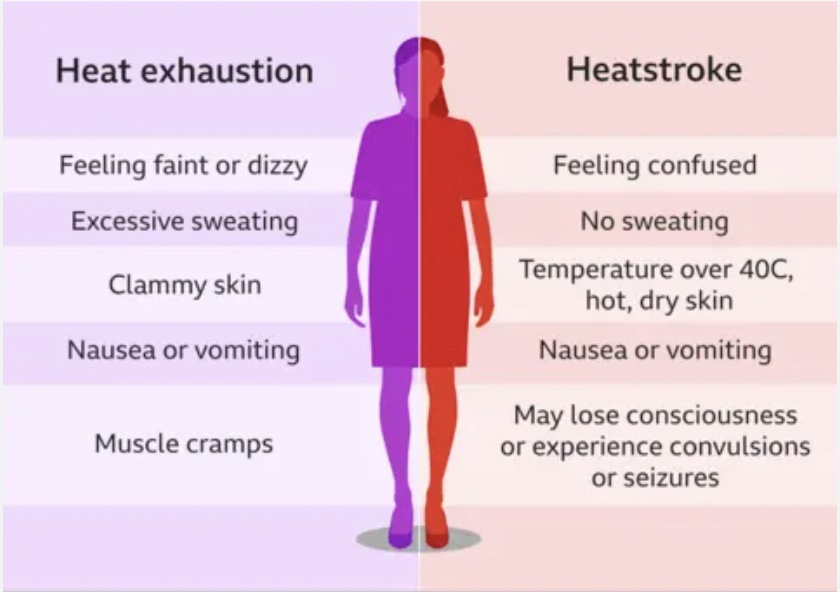
This article appeared in The Huffington Post
Unprecedented heat waves across the United States have significantly increased heat stroke deaths and heat illness emergency room visits significantly over previous years.
I’ll never forget volunteering at the Marine Corps Marathon’s Finish Line Emergency Tent. The experience was horrifying and exhilarating at the same time.
I spoke at the marathon’s scientific conference the day before, and the other speakers — dedicated medical specialists who came from around the world — were amazing. Their expertise and dedication saved many lives at the marathon.
But what is seared in my brain forever are the exhausted runners stumbling into the emergency tent on the verge of death: Forced into ice-water baths, several doctors surrounding each tub struggling to get IVs into the runners to save their lives. It was heat stroke.
The runners were frighteningly disoriented: delicate young women and huge, strong men were screaming, cursing, defecating (the room reeked); they couldn’t remember their own names, let alone birth dates. After some time in the painful icy water with IVs injecting life saving fluids, once their body temperatures were lowered, they were whisked off in waiting ambulances to nearby hospitals. Everyone survived that day.
The most essential nutrient: water
Nutrients don’t only come in the form of food; water is the most important, and often most forgotten, nutrient. You can last for some time without food, but only days without water. Your lean body mass contains about 70 percent to 75 percent water, with fat containing much less: about 10 percent to 40 percent water. Because of increased muscle mass, men’s and athletes’ bodies contain more water than bodies with proportionately lower muscle and higher fat, such as non-athletic women, people who are overweight and people who are older.
Water is:
– The solvent for important biochemical reactions, supplying nutrients and removing waste.
– Essential for maintaining blood circulation throughout your body.
– The maintainer of body temperature. As you exercise, your metabolism and your internal body temperature increase.
Water carries heat away from your internal organs before serious damage occurs, which can lead to heat stroke, and even death. The heat travels through your bloodstream to your skin, causing you to sweat. As the sweat evaporates, this allows you to cool off and maintain a safe body temperature, optimal functioning and health.
Daily water intake must be balanced with losses to maintain total body water. Losing body water can adversely affect your functioning and health. Once you start feeling thirsty, you’ve probably lost about 1 percent of your body water and are dehydrated. With a 2 percent water loss, you could experience serious fatigue and cardiovascular impairments. It’s important to note that individual fluid needs differ depending on your sweat rate, the environmental temperature, your clothing, humidity and other factors.
Heat Illness First Aid
Hydration Tips For Preventing Heat Stroke
As summer temperatures hit, here are a number of important tips.
– Drink enough water to prevent thirst.
– Monitor fluid loss by checking the color of your urine. It should be pale yellow and not dark yellow, too smelly or cloudy.
– For short-duration (less than 60 minutes), low-to-moderate-intensity activity, water is a good choice to drink before, during and after exercise.
– Any time you exercise in extreme heat or for more than one hour, supplement water with a sports drink that contains electrolytes and 6 percent to 8 percent carbohydrates. This prevents “hyponatremia” (low blood sodium), which dilutes your blood and could also lead to serious impairment and death.
– Begin exercise well-hydrated. Drink plenty of fluids the day before and within the hour before, during and after your exercise session.
– Avoid alcohol the day before or the day of a long exercise bout, and avoid exercising with a hangover.
– Consider all fluids, including tea, coffee, juices, milk and soups (though excluding alcohol, which is extremely dehydrating). The amount of caffeine in tea and coffee does not discount the fluid in them, even if they have a slight diuretic effect, according to the most recent report by the National Research Council’s Food and Nutrition Board.
– Eat at least five cups of fruits and vegetables per day for optimum health, as they all contain various levels of water and the all-important nutrient potassium.
– During exercise, for those who experience high sodium losses, eat salty foods in a pre-exercise meal or add an appropriate amount of salt to sports drinks consumed during exercise. Orange juice is high in potassium. Dilute juices, such as V-8 or orange juice, 50/50 with water so that the drinks are 6 percent carbohydrate solutions (the same as sports drinks), which will empty from your stomach quicker than 100 percent juice (juices are naturally 12 percent solutions), allowing the electrolytes and water to quickly reach your heart and organs.
– Following strenuous exercise, you need more protein to build muscle, carbohydrates to refuel muscle, electrolytes to replenish what’s lost in sweat, and fluids to help rehydrate the body. For two hours or less exercise, yogurt and water are excellent choices. For strenuous or long distance exercise of more than two hours, low-fat chocolate milk is a perfect, and natural replacement that fills those requirements.
– You can also replace fluid and sodium losses with watery foods that contain salt and potassium, such as soup and vegetable juices.
– For long hikes, when you’ll need food, dried fruit and nut mixtures contain high amounts of potassium, sodium, protein, carbs and calories — though continue to drink plenty of water.
– To determine your individualized need for fluid replacement: During heavy exercise, weigh yourself immediately before and after exercise. If you see an immediate loss of weight, you’ve lost valuable water. Drink 3 cups of fluid for every pound lost; use this figure to determine the amount of water (or sports drink) you’ll need to drink before and during your next exercise session to prevent weight/water loss in the future.



